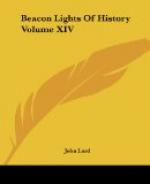AUTHORITIES.
Contributions to the Centennial Exhibition: Ericsson, John.
The Life of John Ericsson: Church, W.C.
History of the Steam Engine: Thurston, R.H.
Steam Navy of the United States: Bennett, Frank M.
Who invented the Screw Propeller?: Nicol, James.
The Naval and Mail Steamers of the United States: Stuart, Charles B.
A Chronological History of the Origin and Development
of Steam
Navigation: Preble, Rear Admiral G.H.
A Treatise on the Screw Propeller, Screw Vessels, and Screw Engine as adapted for Purposes of Peace and War: Bourne, John.
LI HUNG CHANG.
1823-1901.
THE FAR EAST.
BY W.A.P. MARTIN, D.D., LL.D
INTRODUCTORY.
Five years ago Earl Li was at the head of the “Tsungli Yamen,” or Foreign Office in Peking. The present writer, having known him long and intimately, called one morning to request a letter of recommendation to aid in raising money for an International Institute projected by the Rev. Dr. Reid. “He’s got one letter; why does he want another?” asked Li, in a tone of mingled surprise and irritation. “True,” said I, “but that is from the Tsungli Yamen. Nobody in America knows anything about the Yamen. What he wants is a personal letter from you; because the only Chinese name besides Confucius that is known outside of China is Li Hung Chang.”
“I’ll give it! I’ll give it!” he exclaimed, smiling from ear to ear at the thought of his world-wide reputation.
This was taking him on his weak side; but it was fact, not flattery.
Over forty years ago Li’s rising star first came to view in connection with operations against the rebels in the vicinity of Shanghai, and from that day to this, every war, domestic or foreign, has served to raise it higher and make it shine the brighter. It reached its zenith in 1901, when after settling terms of peace with several foreign powers he passed off the stage at the ripe age of fourscore. What better type to set forth his age and nation than the man who, through a long career of unexampled activity, won for himself a triple crown of literary, military, and civil honors? In physique he was a noble specimen of his race, over six feet in height, and in his earlier years uncommonly handsome. The first half of his existence was passed in comparative obscurity at Hofei in Anhui, a region remote from contact with foreign nations.




